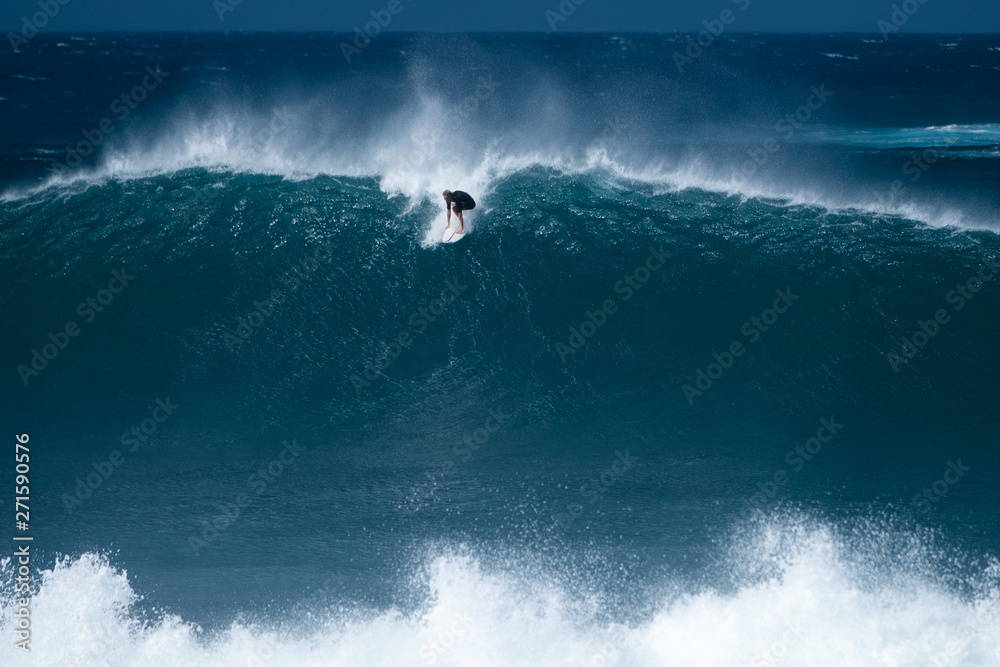
The razor edge and what you make of it
There's something magnetic about the moments when we are perched on a razor-thin edge—when everything we know, every stabiliser we rely on, is stripped away and we suddenly find ourselves facing something raw, unpredictable, life-threatening.
I found myself reflecting on this after listening to Nathan Florence—big-wave surfer and filmmaker—describe what he calls the “wave of his life.” His narrative was vivid, raw, emotional: the drop, the roar of the water, the moment when control seemed to evaporate and survival became a sharp focus. For him, that knife-edge moment didn’t just leave a memory—it shaped him, and in doing so shed light on how leadership too can be forged in these crucibles.
What is it about these near-death, high-stakes experiences that leave such a deep imprint?
First, they call up the ancient parts of our brain—the threat system, the survival instinct, the fight-or-flight circuits. In Nathan’s case, when he saw the giant wall of water closing in on him, his recounting is more than physical: it’s emotional, instinctive, full of energy, fear, focus. Men's Journal+3The Inertia+3Reddit+3 These are the moments we remember—not just because of adrenaline or danger, but because they awaken something primal in us. Time slows, perceptions sharpen, meaning intensifies. We feel alive. We feel connected—to nature, to our own mortality, to the team around us, to something larger than ourselves.
Another author helps flesh this out. In The Power of Nothing to Lose: The “Hail Mary” Effect in Politics, War and Business by William L. Silber, the “Hail Mary” moment describes a leap into the unknown, often when the downside is protected and the upside is hugely attractive. Goodreads+1 Silber shows how these moments—whether in war, politics or business—tend to leverage our primitive emotional systems, our willingness to risk when we feel there’s nothing more to lose, and thereby spark long-term impact. In effect, such moments connect directly to the right side of our brain—the emotional, instinctive, embodied self—not just the analytical left side. They stay with us.
So how does this apply to leadership? The problem is that most of us, especially in positions of responsibility, try to build safe lives: we avoid risk, we smooth out the edges, we aim for predictability. We avoid the knife-edge experiences. And while a peaceful, stable life is admirable and certainly necessary in many ways, I’d argue that avoiding all challenges stalls growth. Because those knife-edge experiences—when managed well—can sharpen our leadership capacity. They test our resilience, clarify what matters, jump-start empathy and humility, surface hidden fears and values, deepen our awareness of impact and risk.
For me, shifts in my personal life that coincided with major changes in both our business environment and internal company structure, created that sense of vivid risk, and the urge for survival that created new sources of energy and clarity.
As leaders and human beings, I would recommend intentionally stepping into more challenging situations—but in a risk-managed way. That might mean pursuing an adventure outside your comfort zone, taking on a project that stretches you, putting yourself in an unfamiliar environment, working through a physical challenge, or simply embracing a scenario where stakes and uncertainty are higher than usual. The goal isn’t reckless danger but conscious growth. In doing so, you sharpen your mind, heighten your compassion, test your inner resources, and emerge better equipped to lead others who will likewise face uncertain terrain.
In short: leadership is not only forged in boardrooms and spreadsheets. It is forged in the waves of our lives—the moments when the ground drops away and survival, clarity, focus, and transformation converge. Let us not shy away from the waves, but prepare, paddle out, drop in—and when we come up, let us lead stronger, wiser, and more deeply human.




